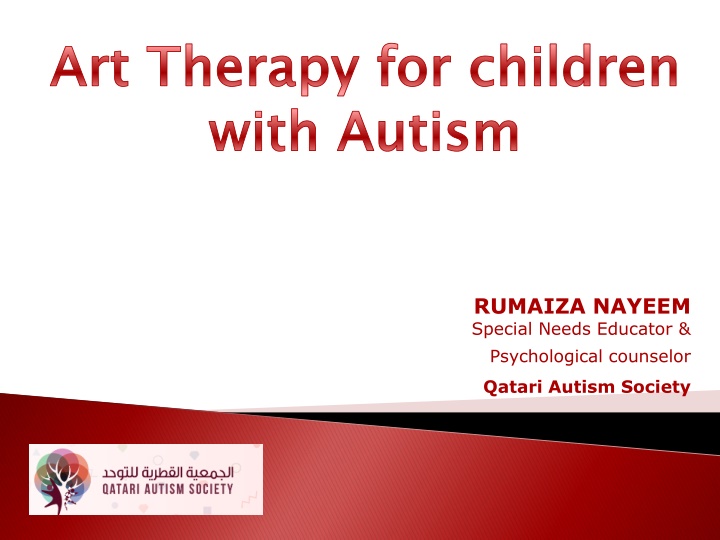
Art Therapy Techniques to Support Children with Autism
Discover how art therapy can benefit children with autism, addressing core symptoms, promoting communication, and enhancing sensory integration. Learn practical activities and the benefits of using drawing as a communication tool for children with ASD.
Download Presentation

Please find below an Image/Link to download the presentation.
The content on the website is provided AS IS for your information and personal use only. It may not be sold, licensed, or shared on other websites without obtaining consent from the author. If you encounter any issues during the download, it is possible that the publisher has removed the file from their server.
You are allowed to download the files provided on this website for personal or commercial use, subject to the condition that they are used lawfully. All files are the property of their respective owners.
The content on the website is provided AS IS for your information and personal use only. It may not be sold, licensed, or shared on other websites without obtaining consent from the author.
E N D
Presentation Transcript
Art Therapy for children with Autism Art Therapy for children with Autism RUMAIZA NAYEEM Special Needs Educator & Psychological counselor Qatari Autism Society
What is Art therapy? What is Art therapy? Art therapy is a form of meaningful therapy that uses the creative process through an artistic form to improve a person s physical, mental and emotional well beings.
How How can Art can Art Therapy help Autism Therapy help Autism Art therapy has the potential to address some of the core symptoms of Autism. Promoting sensory regulation Supporting psychomotor development Facilitating communication
How art therapy can help autism children How art therapy can help autism children Communication through art expression Imagination and abstract thinking Building relationships Sensory integration Recreation and leisure skills Visual / spatial abilities
Can drawing help Autism? Can drawing help Autism? Drawing can be a tool to complete the psycho diagnose process, especially with children having issues in, Expression Verbal problems The ASD children have difficulties in describing their problems, feelings and emotions, Hence they can provide useful information by drawing.
Observation Observation Changes of behaviors and mood Sensory input and feelings Dramatizing situations Social skills Symbolic representation
Practical Practical Task Task 1 1 Mood warm up Materials required : magazines, papers and books scissors, glue, construction paper and white paper Procedure: suggest your child to find one picture that best represents their present mood. Ask them to cut out the picture and suggest they find a piece of construction paper that also symbolizes their mood. Direct them to glue the picture on the paper. Goals: focuses on the reason why the child choose that picture and exploration of his or her present mood. Mood affects attitude, action and behavior changes may be examined through this activity.
Thank you. Thank you.


